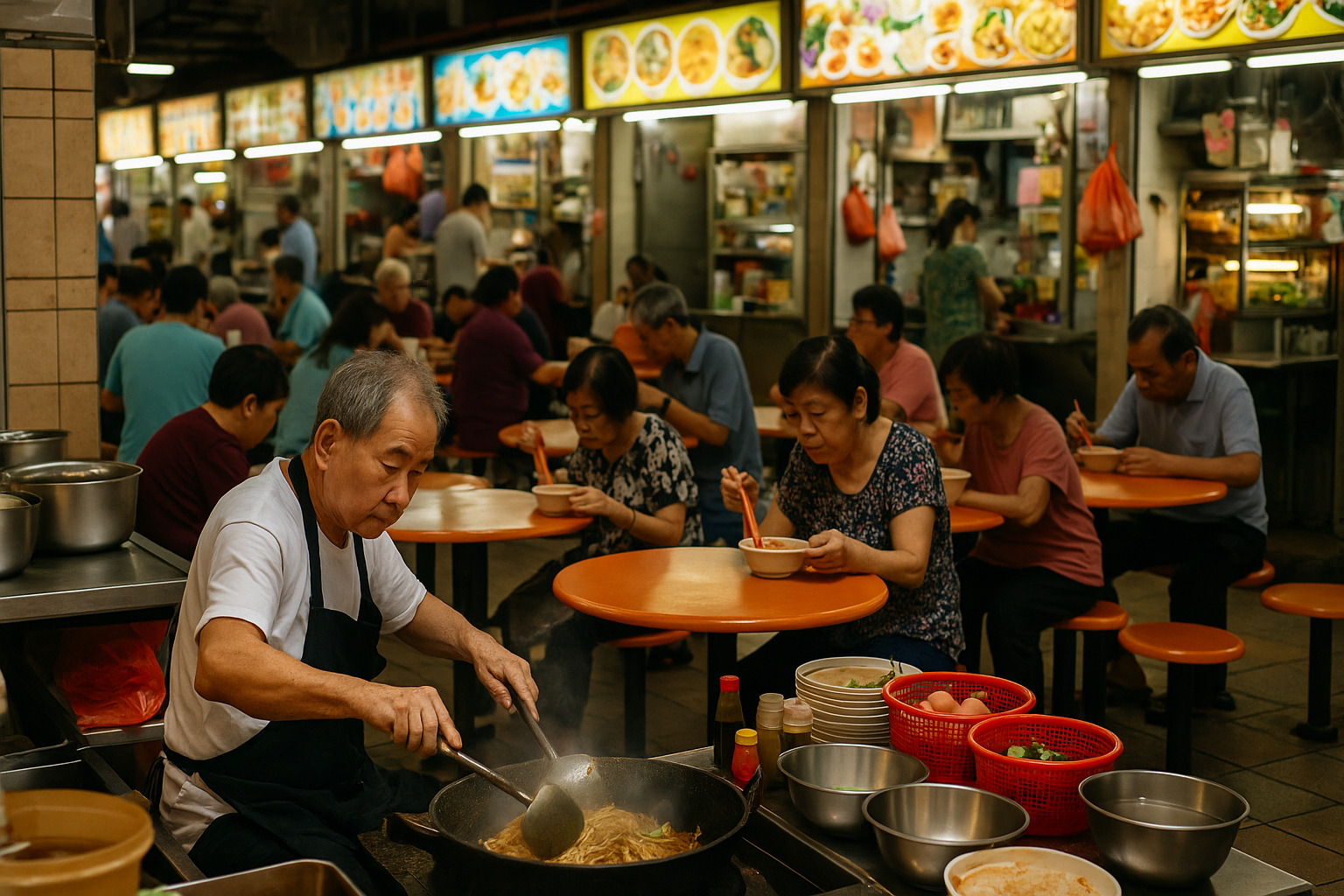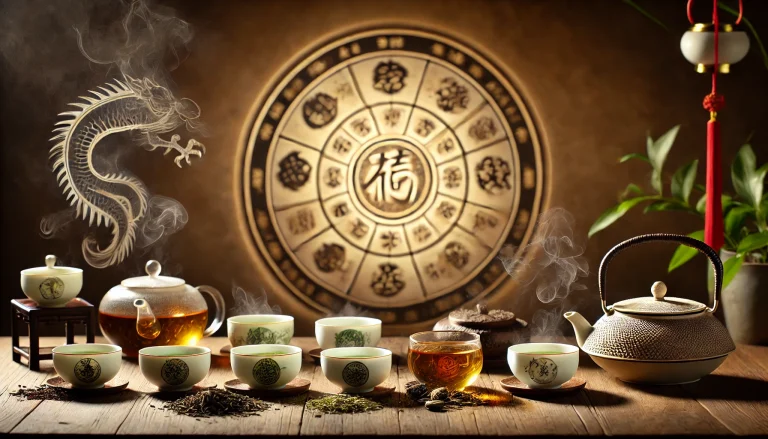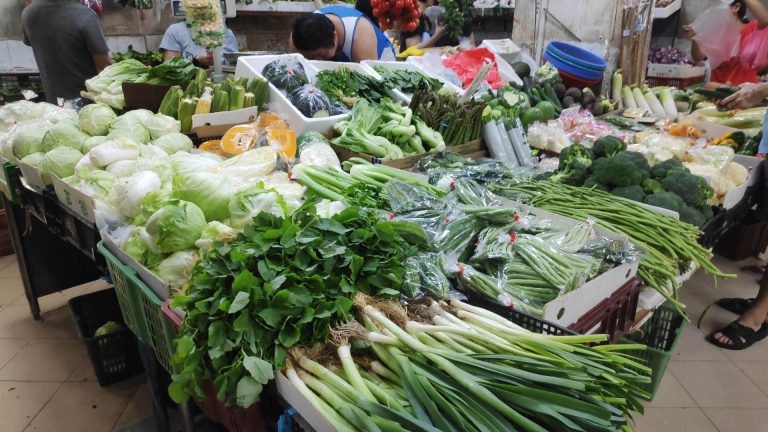Singapore’s hawker stalls do more than just serve affordable meals. They carry the country’s culinary memory, shaped by migration, survival, innovation, and tradition. These compact kitchens hold the blueprint of multicultural recipes, passed hand to hand, generation to generation. In a city constantly building upward, hawker stalls root the people to flavors that define home.
The Origins of a Cultural Bedrock
The story began in the 1800s, with street hawkers—mostly migrants—pushing carts through alleyways and roadside corners. These vendors came with recipes from China, India, Malaysia, and elsewhere. Lacking resources, they adapted dishes using local ingredients. That gave birth to signature meals such as:
- Hainanese Chicken Rice
- Laksa
- Char Kway Teow
- Roti Prata
Each dish tells the story of fusion born from necessity. These hawkers weren’t chefs. They were tradespeople feeding dockworkers, rickshaw pullers, and students. Their cooking defined what it meant to eat well and affordably in Singapore.
The Shift From Streets to Structured Spaces
By the mid-20th century, rising hygiene concerns and urban planning efforts pushed for change. The government relocated vendors from chaotic street corners to designated hawker centres. This transition introduced:
- Proper sanitation facilities
- Designated cooking stalls
- Regulated licensing
What might have dismantled the culture instead preserved it. These centres became permanent homes for once-nomadic cooks. They were no longer chasing foot traffic — the people came to them. Singapore’s hawker centres became known as the “community dining rooms” where everyone — regardless of class, race, or age — shared tables and flavors.
Hawkers as Culinary Guardians
Behind the wok stands someone who has spent years mastering a single dish. Many hawkers repeat the same recipe thousands of times until the flavor is muscle memory. They know the weight of garlic by sight. They know when noodles are ready by sound.
This craftsmanship ensures dishes retain their integrity over decades. Some hawkers use recipes handed down across three generations. Others adopt traditions from masters they’ve apprenticed under. Two ways this heritage gets passed:
- Family Transmission
Children learn the trade from their parents and continue the stall’s legacy. - Apprenticeship
Newcomers train under seasoned hawkers, learning techniques through repetition and rigor.
No printed recipe book replicates this. It’s muscle memory, instinct, and lineage.
Social Glue on Plastic Stools
Hawker centres go beyond food. They provide a shared space for connection. It’s where a banker eats beside a cab driver. Where teenagers mix with retirees. The affordability of hawker fare makes it accessible to everyone. That makes the centres a rare equalizer.
Hawker centres are often described as Singapore’s “stomach and soul.” They feed people literally, but also stitch the social fabric with every shared table and tray return.
Global Recognition Meets Local Commitment
In 2020, UNESCO added Singapore’s hawker culture to its Representative List of the Intangible Cultural Heritage of Humanity. This wasn’t just a badge of honor — it came with responsibility.
Singapore must now submit reports every six years detailing how it safeguards hawker culture. That includes:
- Training programs at local Institutes of Technical Education (ITEs)
- Incubation Stall Programme offering subsidized rent for new hawkers
- Infrastructure grants to improve stall conditions
- Public campaigns to promote appreciation and patronage
The government’s role is not only to preserve nostalgia but to keep this ecosystem alive amid rapid modernization.
Challenges That Threaten the Legacy
No heritage remains strong without confronting its weaknesses. Hawker culture is facing several that cannot be ignored:
- Aging Workforce
Median age of hawkers hovers around 60. Many are nearing retirement. Few young Singaporeans want to take over the trade due to long hours and physical demands. - Rising Costs
Ingredient prices, utilities, and rent have increased. To protect customer loyalty, many hawkers hesitate to raise prices, hurting profit margins. - Mass-Produced Alternatives
Chain restaurants and central kitchens offer standardized food, often prioritizing volume over craft. This chips away at the artisanal quality of hawker meals.
These challenges threaten not just individual livelihoods but the authenticity of Singapore’s food culture.
The Rise of the Hawkerpreneur
Despite those headwinds, a new generation is stepping forward. These younger hawkers, or “hawkerpreneurs,” are:
- Modernizing payment systems with QR codes
- Introducing digital menus and social media marketing
- Reinterpreting traditional dishes using modern culinary techniques
- Experimenting with fusion while staying grounded in traditional flavor profiles
They blend the old with the new, showing reverence without replication. They choose the hawker life not out of necessity but from passion. They see value in heritage and are building its future with intention.
Why It Endures
Singapore’s hawker culture remains alive because people care. The hawkers who wake before sunrise to prep ingredients care. The aunties and uncles who line up daily for their favorite bowl of noodles care. The student who decides to continue her father’s stall cares.
This is why hawker stalls maintain Singapore’s food heritage. Not because of nostalgia. Not because of recognition. But because the food still matters. Because the flavors still speak. Because every dish is a story worth keeping.



